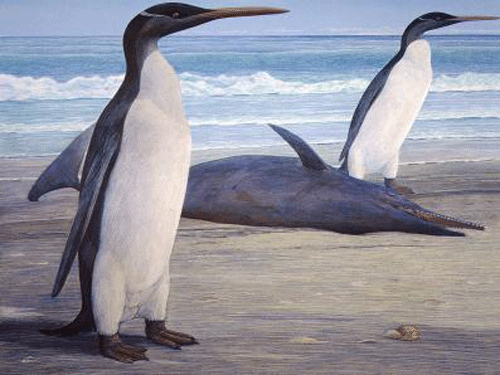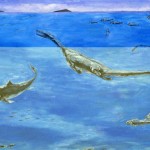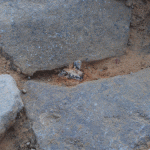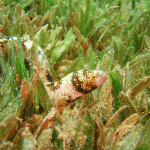
Two Kairuku penguins come ashore, passing a stranded Waipatia dolphin. Credit: Artwork by Chris Gaskin, owner and copyright owner: Geology Museum, University of Otago.
A giant penguin fossil from New Zealand has been reconstructed after 35 years.
A giant fossil penguin, discovered in 1977 by Dr Ewan Fordyce from the University of Otago in New Zealand, has been completely reconstructed. The penguin has been dubbed Kairuku, a Maori word meaning ‘diver who returns with food,’ and is expected to give researchers new insights into prehistoric penguin diversity.
Dr Dan Ksepka, North Carolina State University, in the US, and Dr Paul Brinkman, North Carolina Museum of Natural Sciences, travelled to New Zealand in 2009 and 2011 to assist in the reconstruction. Ksepka was interested in the fossil because its body shape differs from any previously known species of penguin, living or extinct.
He was also interested in the diversity of penguin species that lived in what is now New Zealand during the Oligocene period, approximately 25 million years ago. “The location was great for penguins in terms of both food and safety,” he said.
“Most of New Zealand was underwater at that time, leaving isolated, rocky land masses that kept the penguins safe from potential predators and provided them with a plentiful food supply.”
The researchers reconstructed Kairuku from two separate fossils, using a king penguin skeleton as a model. The final results, published in the Journal of Vertebrate Paleontology, showed that Kairuku would have been the largest of the five penguin species that lived in New Zealand during this period.
The diversity of penguin species from the period and the Kairuku’s physique made the reconstruction difficult. “Kairuku was an elegant bird by penguin standards, with a slender body and long flippers, but short, thick legs and feet,” said Ksepka.
“If we had done a reconstruction by extrapolating from the length of its flippers, it would have stood over 6 feet tall. In reality, Kairuku was around 4-feet-2 inches tall or so.”
Ksepka hopes that the reconstruction of Kairuku will give other palaeontologists more information about some the other fossils found in that area as well as add to the knowledge about giant penguin species. “This species gives us a more complete picture of these giant penguins generally, and may help us to determine how great their range was during the Oligocene period.”
— Laura Boness
Source: Eureka Alert





